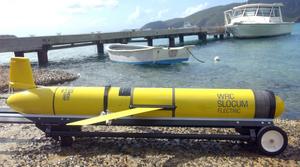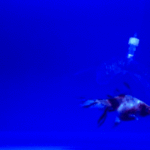 Sea turtles do it. Ocean liners do it. Charles Lindbergh did it. Even a Zeppelin can do it. Can an autonomous robot do it, across the North Atlantic Ocean… underwater? The journey across the Atlantic has always been an historic one. Now marine scientists are preparing what may be the first autonomous crossing by an underwater vehicle, according to Virgin islands Daily News.
Sea turtles do it. Ocean liners do it. Charles Lindbergh did it. Even a Zeppelin can do it. Can an autonomous robot do it, across the North Atlantic Ocean… underwater? The journey across the Atlantic has always been an historic one. Now marine scientists are preparing what may be the first autonomous crossing by an underwater vehicle, according to Virgin islands Daily News.
The thermal glider prototype, which can drop to depths of 1,200 meters below the sea surface, likely will set off on a trans-Atlantic voyage from St. Thomas soon.
“If all goes well, we’ll send it to the Canary Islands,” said Chip Haldeman, a marine technician at Rutgers’ Institute of Marine and Coastal Sciences.
Craig McClain calls the Slocum autonomous underwater vehicle “an oceanographer’s best friend“.
The robotic glider being prepared in the Virgin Islands is operated by researchers at Rutgers University and Teledyne Webb research. The gliders collect information on conductivity, temperature and depth for oceanographic research, but they can be programmed to collect other data. Rutgers has a fleet of 20 thermal gliders. The robots can descend up to 2000 m depth, then periodically resurface to “phone home,” download data, and get a fix on their positions.
Hat tip to CK for the link.






How cool! If it can be done on the moon, why not under water.